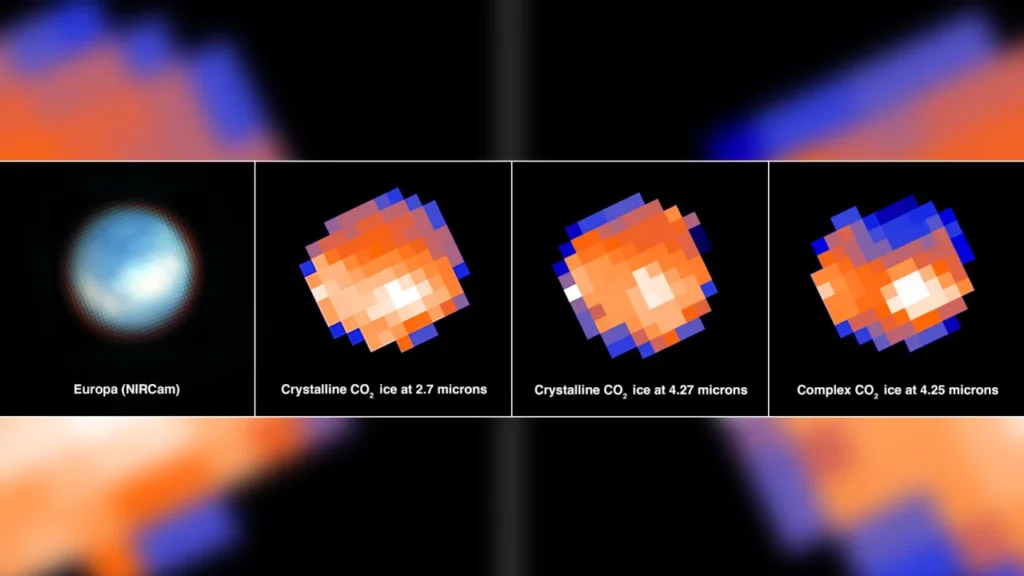Tags: carbon dioxide in Europa, Life in europa, water in europa, europa ocean, jupiter’s moon, james webb telescope.
In a significant breakthrough, astronomers have unveiled a groundbreaking revelation that could mark a monumental milestone for humankind. Utilizing the powerful James Webb Space Telescope, scientists have successfully detected the presence of carbon dioxide on the frigid surface of Europa, one of Jupiter’s captivating moons. This groundbreaking discovery has been made possible by the extensive data gathered through the telescope’s observations.
This latest finding holds profound implications for the pursuit of extraterrestrial life beyond our planet. The European Space Agency suggests that the carbon dioxide they have detected likely originates from an ocean concealed beneath Europa’s icy veneer, rather than being sourced externally, such as from meteorites. This revelation signifies that this hidden ocean may contain carbon, an elemental building block crucial for life as we understand it.

Moreover, the National Aeronautics and Space Administration (NASA) has shared recent discoveries indicating an intriguing exchange of materials between the subterranean ocean and the icy surface of Europa. These revelations have also unveiled that carbon dioxide is most prevalent in a region known as Tara Regio on Europa. Remarkably, Tara Regio is relatively youthful in geological terms compared to other regions, and its surface ice exhibits a disrupted nature.
Samantha Trumbo, the lead author of the research paper containing this data, remarked in a recent interview, “Previous Hubble telescope observations have hinted at the presence of ocean-derived salt in Tara Regio. Now that we have established the presence of carbon dioxide in this region, it strongly suggests an internal oceanic origin.”
Geronimo Villanueva, from NASA’s Goddard Space Flight Center, emphasized, “Life on Earth thrives on chemical diversity, and carbon serves as the backbone of our biology. Understanding the chemical composition of Europa’s ocean is instrumental in assessing whether it might be conducive or inhospitable to life as we know it.”
This discovery assumes pivotal significance because Europa has long held the status of a potential sanctuary and is regarded as the only celestial body within our solar system with the potential for harboring life. NASA is actively considering an upcoming mission, the Europa Clipper, scheduled for launch in 2024, which will deploy compact robotic explorers the size of cellphones. These robots will be tasked with exploring the subsurface water beneath Europa’s kilometers-thick icy shell and collecting comprehensive data using a diverse suite of scientific instruments. The mission is set to reach Europa in 2030, holding the promise of unraveling the mysteries of this enigmatic moon and its potential for hosting life beyond Earth.